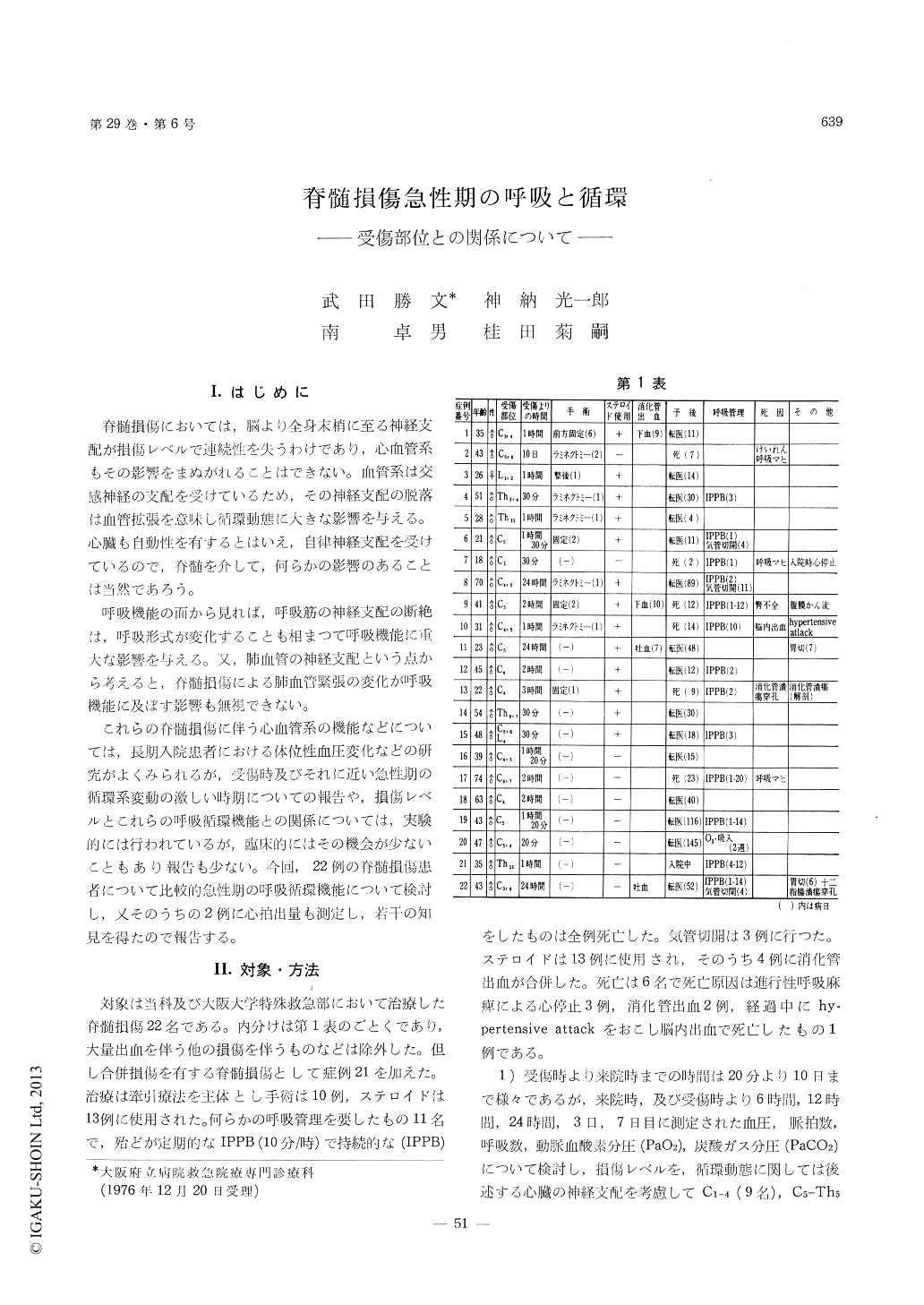Japanese
English
- 有料閲覧
- Abstract 文献概要
- 1ページ目 Look Inside
I.はじめに
脊髄損傷においては,脳より全身末梢に至る神経支配が損傷レベルで連続性を失うわけであり,心血管系もその影響をまぬがれることはできない。血管系は交感神経の支配を受けているため,その神経支配の脱落は血管拡張を意味し循環動態に大きな影響を与える。心臓も自動性を有するとはいえ,自律神経支配を受けているので,脊髄を介して,何らかの影響のあることは当然であろう。
呼吸機能の面から見れば,呼吸筋の神経支配の断絶は,呼吸形式が変化することも相まつて呼吸機能に重大な影響を与える。又,肺血管の神経支配という点から考えると,脊髄損傷による肺血管緊張の変化が呼吸機能に及ぼす影響も無視できない。
Twenty two cases of the cervical and thoraciccord injury were studied to determine hemodynamicand respiratory function within 7 days from theinjury.
Most patients showed a tendency of bradycardiaand hypotension on admission which were moreremarkable in the group of lower cervical cord orthe upper thoracic cord lesion than the uppercervical cord group. Such a hypotension and brady-cardia tended to recover within 7 days.
In cervical cord injury, cardiac output remained unchanged, which indicated that initial hypotension was due to decreased total peripheral resistance.
Respiratory rate was slightly increased in mostpatients, but did'nt show any significant differenceamong the level of the lesion. PaO2 andPaCO2were within normal range on admission, howeverPaO2 decreased gradually in 7 days only in cervicalcord injury.
Increased pulmonary arterial pressure was con-firmed during the above hypoxemic period. It sug-gests that disturbance of neurological control ofpulmonary circulation might play a significant rolein the respiratory insufficiency of cervical cordinjury.

Copyright © 1977, Igaku-Shoin Ltd. All rights reserved.


